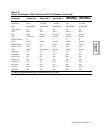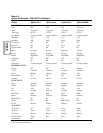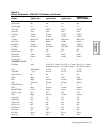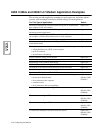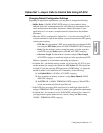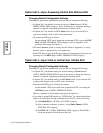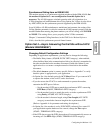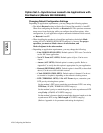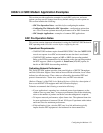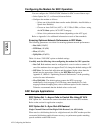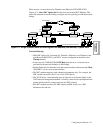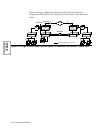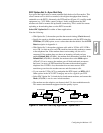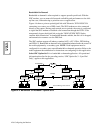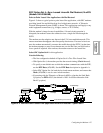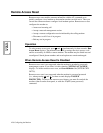
Configuring the Modem 4-21
Configuring
the Modem
326XFA S T-SDC Modem Application Examples
This section provides application examples for each SDC option set, and notes
options you may need to change from factory default settings for each option set.
This section includes the following:
• SDC Pre-Operation Notes—read this before configuring the modem
• Configuring The Modem for SDC Operation—configuration options that
are critical to ensure optimum network performance on an SDC connection
• SDC Sample Applications—examples of common SDC applications
SDC Pre-Operation Notes
This section contains important information for using the 326XFA S T-SDC Modem in
SDC operating mode. Read this section before configuring the unit.
Operational Requirements
• 326XFAS T-SDC modems require framed HDLC/SDLC-like data. NOTE: BER
tests do not operate in an SDC environment because the data is not framed.
• 326XFAS T-SDC modems support an NRZ or NRZI data encoding method.
Refer to the DTE documentation for information on the data encoding method
the DTE supports. (Refer to Appendix A, Data Form [AT
*
DF] option, for
details on NRZ/NRZI data encoding methods.)
Optimizing Network Performance
The 326XFA S T-SDC modem provides front panel displays of RX/TX Throughput
and Link Utilization. Higher values indicate more efficient utilization; lower values
indicate less efficient usage. These values are affected by the attached DTE and
protocol characteristics—frame size, window size, and DTE rate selected.
(Refer to Chapter 1 of the326X Series Modem Reference Guide for a description of
how to use the RX/TX Throughput and Link Utilization displays.)
Telenetics recommends the following to maximize efficiency:
• If your application is operating in a windowed protocol environment, set the
window sizes to greater than 1 to improve performance. Recall that windowing
refers to the number of packets sent before an acknowledgment is required.
• To improve network performance, adjust frame sizes. The optimum frame size
for most applications is between 128 and 1024 bytes. Experiment with window
and frame sizes for maximum performance.
• If link utilization is low, raise the DTE rate. Low link utilization typically
implies that the DTE equipment is the bottleneck in data transmission.



